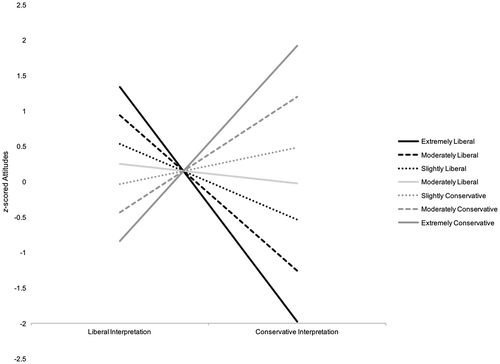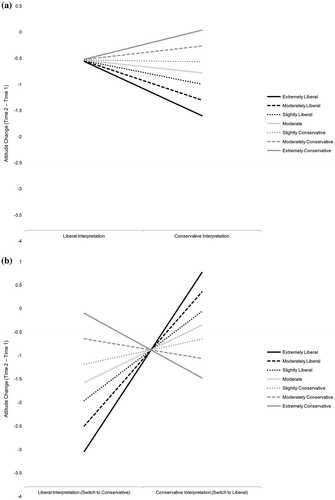Figures & data
Figure 1. Conditional indirect effect of recipient group identity and source group identity on attitudes through message meaning (full model). This is a conceptual model and not a formal path diagram. In the interest of clarity, it omits lower-order paths required to estimate the model as well as other statistical information (e.g., variances, disturbance terms, etc., Hayes & Preacher, Citation2013).

Table 1. Experiment 1: mean (SDs) of interpretations and attitudes as a function of source identity and participant identity.
Table 2. Experiment 1: regressions predicting interpretations and attitudes along with conditional indirect effects.
Figure 2. Simple slopes of interpretations on attitudes at values of recipient identification in Experiment 1. The (relatively more) liberal vs. conservative interpretation labels on the x-axis correspond to standard ±1 SD on the interpretation measure. Please see the online supplemental material for calculation of identification values.

Table 3. Experiment 2: means (SDs) of agreement by source, altering source identity or message meaning, and participant identity.
Table 4. Experiment 2: two-step model (full data-set).
Table 5. Experiment 2: regression predicting change in agreement after altering source or message meaning (Time 2 – Time 1).
Figure 3. Simple slopes of interpretations on change in agreement (Time 2 – Time 1) at values of recipient identification in Experiment 2 among participants instructed to (a) imagine that the same interpretation was intended by the opposite source, or (b) imagine that the same source had intended the opposite interpretation.

